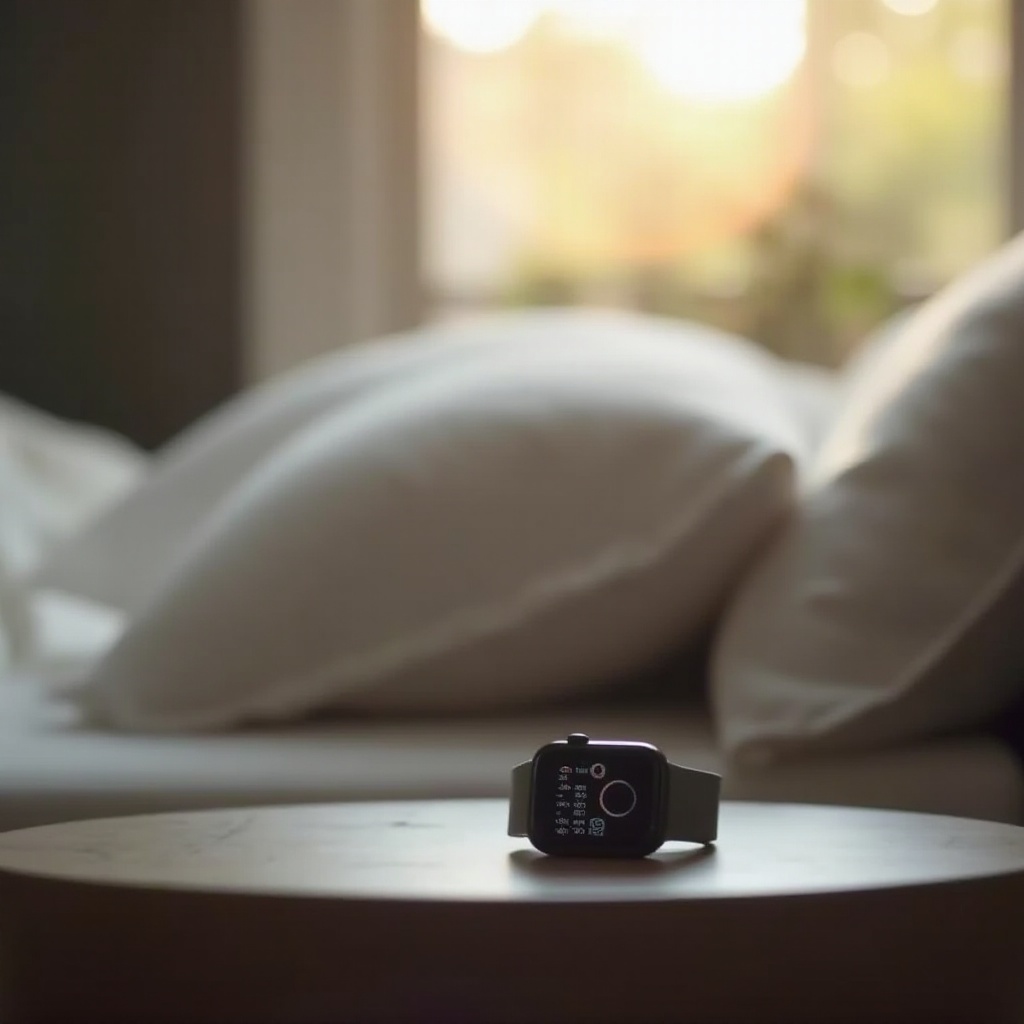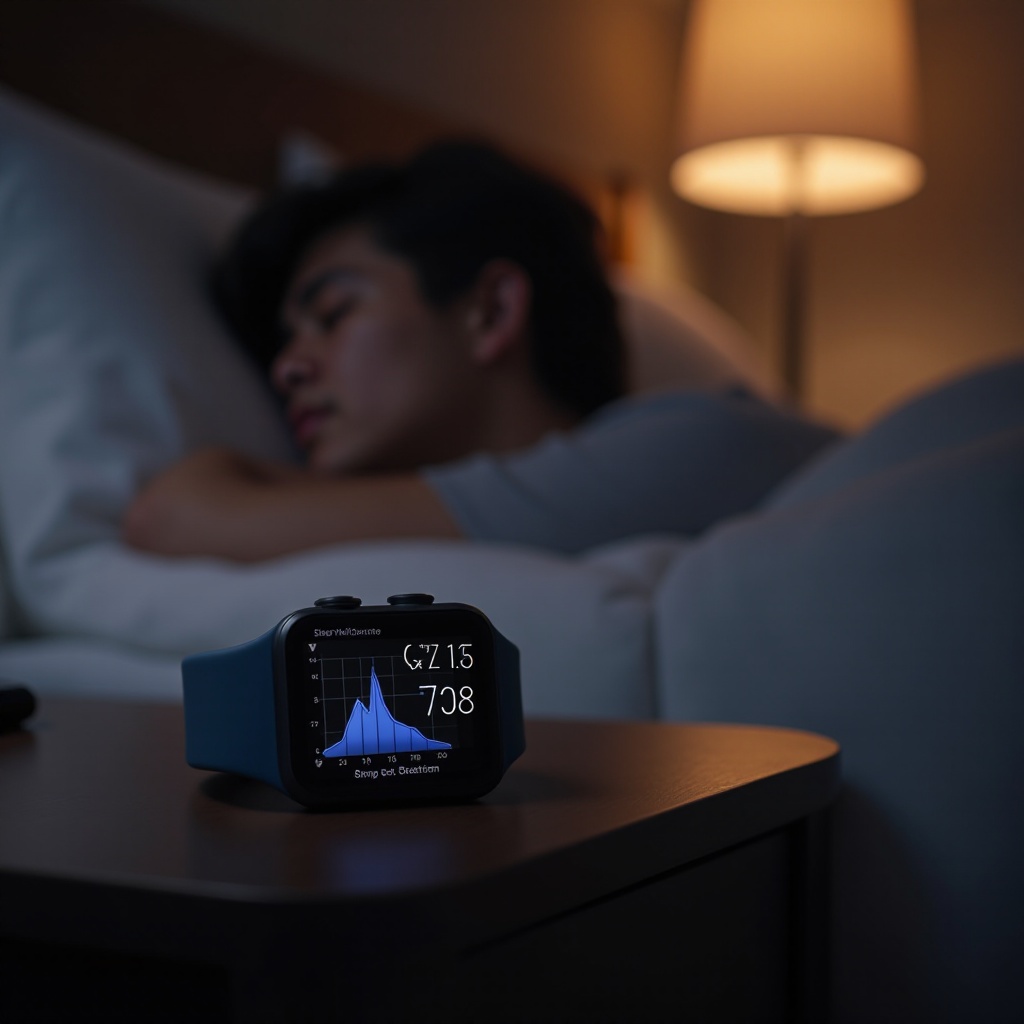Introduction
Smartwatches have revolutionized how we monitor our daily activities, including sleep. Many users are curious about how these sophisticated devices measure sleep and what technologies they use to provide insights into their nightly rest. Sleep tracking features in smartwatches can help you understand your sleep patterns, identify areas for improvement, and ultimately promote better sleep hygiene. In this article, we will delve into the basics of smartwatch sleep tracking, the technologies involved, the various sleep metrics provided, the accuracy of these measurements, and the benefits of using a smartwatch for sleep monitoring.

The Basics of Smartwatch Sleep Tracking
Sleep tracking with a smartwatch involves using various sensors to collect data on your movement, heart rate, and other physiological signals while you sleep. The collected data is then analyzed using complex algorithms to determine your sleep stages and overall sleep quality. Smartwatches typically track the amount of time you spend asleep versus awake and categorize sleep into different stages, such as light sleep, deep sleep, and REM (Rapid Eye Movement) sleep.
These devices are worn on the wrist, which allows them to continuously monitor your body’s movements and physiological signals throughout the night. By combining and analyzing the data obtained from these sensors, smartwatches can provide a comprehensive overview of your sleep patterns and offer personalized recommendations to improve your sleep quality.
Technologies Behind Sleep Tracking
Accelerometers and Gyroscopes
Accelerometers are sensors that measure the acceleration of the device in different directions. In sleep tracking, they detect even the slightest movements you make during the night. Gyroscopes, on the other hand, measure the orientation and rotation of the device. Together, these sensors can determine your body’s position and movements while you sleep, which helps to identify when you’re asleep versus awake and differentiate between sleep stages.
Optical Heart Rate Sensors
Optical heart rate sensors work by shining a light onto your skin and measuring the amount of light that is reflected back. This method, known as photoplethysmography (PPG), helps track your heart rate variability (HRV) throughout the night. Changes in heart rate and HRV are closely linked to different sleep stages. For example, a lower heart rate is generally associated with deep sleep, while more variability may indicate REM sleep.
Algorithms and Machine Learning
Once the raw data is collected from the accelerometers and optical heart rate sensors, it is processed using sophisticated algorithms. These algorithms analyze the data to identify patterns and classify different sleep stages. Machine learning techniques enhance this process by enabling the algorithms to learn from large datasets and improve their accuracy over time. By considering various factors such as movement patterns, heart rate, and historical sleep data, these intelligent algorithms can provide detailed insights into your sleep quality.
Understanding Sleep Metrics
Sleep Stages: REM, Light, and Deep Sleep
Sleep is categorized into different stages, each serving a unique purpose in the overall restorative process. Light sleep is a transitional stage between wakefulness and deep sleep, during which the body relaxes and prepares for deeper sleep. Deep sleep is the most restorative stage, where the body repairs tissues and builds bone and muscle. REM sleep is essential for cognitive functions such as memory consolidation and dreaming. Smartwatches track these stages to give you a clear picture of your sleep cycle.
Time Spent in Different Sleep Stages
Knowing how much time you spend in each sleep stage can help you understand the quality of your sleep. Ideally, you should spend a significant portion of the night in deep sleep and REM sleep, as these stages are crucial for physical and mental recovery. If you find that you are not getting enough of these stages, your smartwatch can help you identify patterns or habits that might be affecting your sleep quality.
Sleep Duration and Efficiency
In addition to the stages of sleep, smartwatches also track your overall sleep duration and efficiency. Sleep duration refers to the total amount of time you spend asleep, while sleep efficiency is the percentage of time you spend asleep versus the time you spend in bed. High sleep efficiency indicates that you are falling asleep quickly and staying asleep throughout the night. These metrics can help you assess whether you are getting enough rest and make necessary adjustments to your sleep routine.
Evaluating the Accuracy and Effectiveness
Comparisons with Professional Sleep Studies
To gauge the accuracy of smartwatch sleep tracking, many studies have compared these devices with professional sleep studies, also known as polysomnography. Polysomnography is considered the gold standard for sleep analysis as it involves monitoring brain waves, oxygen levels, heart rate, and other physiological signals. While smartwatches might not match the accuracy of polysomnography, many high-quality devices offer close approximations that are reliable for everyday use.
Common Limitations and Pitfalls
Despite their advanced technology, smartwatches do have limitations when it comes to sleep tracking. One common issue is their inability to track brain activity, which is essential for accurately identifying sleep stages. Additionally, factors such as movement artifacts or incorrect sensor placement can affect the accuracy of data. It’s also worth noting that individual differences in physiology can lead to variations in how data is interpreted.
Understanding these limitations helps set realistic expectations about what smartwatches can and cannot do. However, they still provide valuable insights that can guide you in improving your sleep habits.

Benefits of Using a Smartwatch for Sleep Tracking
Using a smartwatch for sleep tracking offers several benefits. These devices provide detailed insights into your sleep patterns, allowing you to identify areas for improvement. They can help you establish healthier sleep routines, monitor your progress over time, and ultimately enhance your overall well-being. The convenience of having continuous access to sleep data at your wrist makes it easier to make informed decisions about your sleep hygiene.
Conclusion
Smartwatches utilize advanced sensors and algorithms to measure sleep, offering insights into sleep stages, duration, and efficiency. While not as precise as professional sleep studies, they are effective tools for everyday sleep monitoring. Understanding the technology and metrics behind sleep tracking can help you make the most of your smartwatch and improve your nightly rest.
Frequently Asked Questions
How accurate are smartwatches in tracking sleep?
Smartwatches offer a fairly accurate estimation of sleep stages and overall sleep quality. They can reliably track sleep duration and general sleep patterns, making them useful for everyday monitoring, though they may not be as precise as professional sleep studies.
Can smartwatches detect sleep disorders?
While smartwatches can identify irregular sleep patterns and provide insights into sleep quality, they are not diagnostic tools for sleep disorders. It is advisable to consult a healthcare professional for an accurate diagnosis if you suspect a sleep disorder.
What is the best smartwatch for sleep tracking?
Some of the best smartwatches for sleep tracking include the Apple Watch Series, Garmin Forerunner, and Fitbit Sense. These devices offer comprehensive sleep tracking features and have been praised for their accuracy and user-friendly interfaces.

